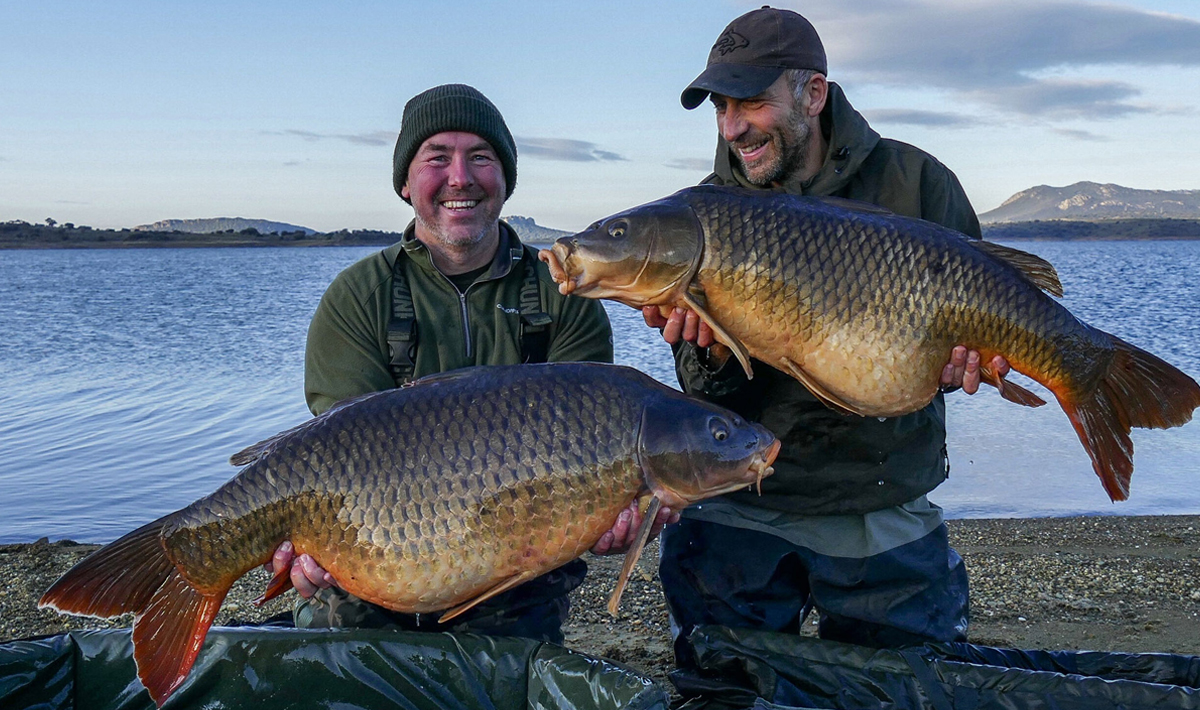Which type of carp rods are currently the best doesn’t matter in this article. In this article we’re particularly happy to help guide the beginning carp angler. The first question you need to ask yourself is: am I going to fish “static” carp fishing or am I going to stalking?
With static fishing you use a rod pod (system where multiple carp rods can rest/lie) or individual rod rests with bite alarms and a self-hooking system where the carp picks up the boilie and hooks itself through the lead that sits on the bottom. With static fishing you wait (passive) for the fish and when stalking you often seek out the carp (active).
Stalking for carp is often done roaming along the waterside where you often create multiple feeding spots. As soon as a spot shows signs of activity like bubble trails, swirls or bending reeds, then this spot is approached very carefully and fished. Stalking for carp is therefore a completely different type of fishing than static fishing.
The Stalking Rod
You can now imagine that the stalking rod needs a completely different action than the distance rod used in static fishing. A stalking rod has a parabolic action and is often 3.90 meters (13ft) or longer. The main reason is that when stalking you often fish very close to the margins and to keep the carp out of the reeds a longer rod is recommended. The carp will literally seek out every obstacle it can find during the fight.
Use a not too large reel with the stalking rod. When choosing a reel it’s important that the rod remains balanced (horizontally). Depending on the type of water, the obstacles and the size of the carp, the stalking rod should have a test curve (LBS) of maximum 1 3/4 LBS. LBS is the weight needed to bend the rod at a 90° angle. The line diameter with a stalking rod often varies between 22 and 28mm.
The Distance Rod
With static carp fishing, distance is important. These distance rods often vary from 2 to 3 LBS test curve. A big difference with the stalking rod is that distance rods often only have 6-7 guides while a stalking rod often has more than 10. Also the first guide ring is quite large to offer as little resistance as possible when casting.
The rod length for distance rods is often 3.60 (12ft) to 3.90 meters (13ft). The characteristic of a distance rod is that it has a light tip action and only when more force is applied to the rod, it starts to bend more toward the handle. When choosing a reel it’s also important that the rod remains balanced.
However, with static fishing, larger (free spool) reels are often used to be able to cover long distances. In the Netherlands you often don’t fish further than 100-150 meters from the bank and a large reel isn’t necessary, but on large lakes a big reel is sometimes a must.
As a beginning carp angler it’s wise to choose a not too large reel. A large reel not only feels clunky, it also doesn’t fish nicely. Of course this can vary per person. Depending on the conditions, the line diameter often lies between 28mm and 35mm.
Of course you can also get good advice at a local tackle shop nearby.
Good luck!



